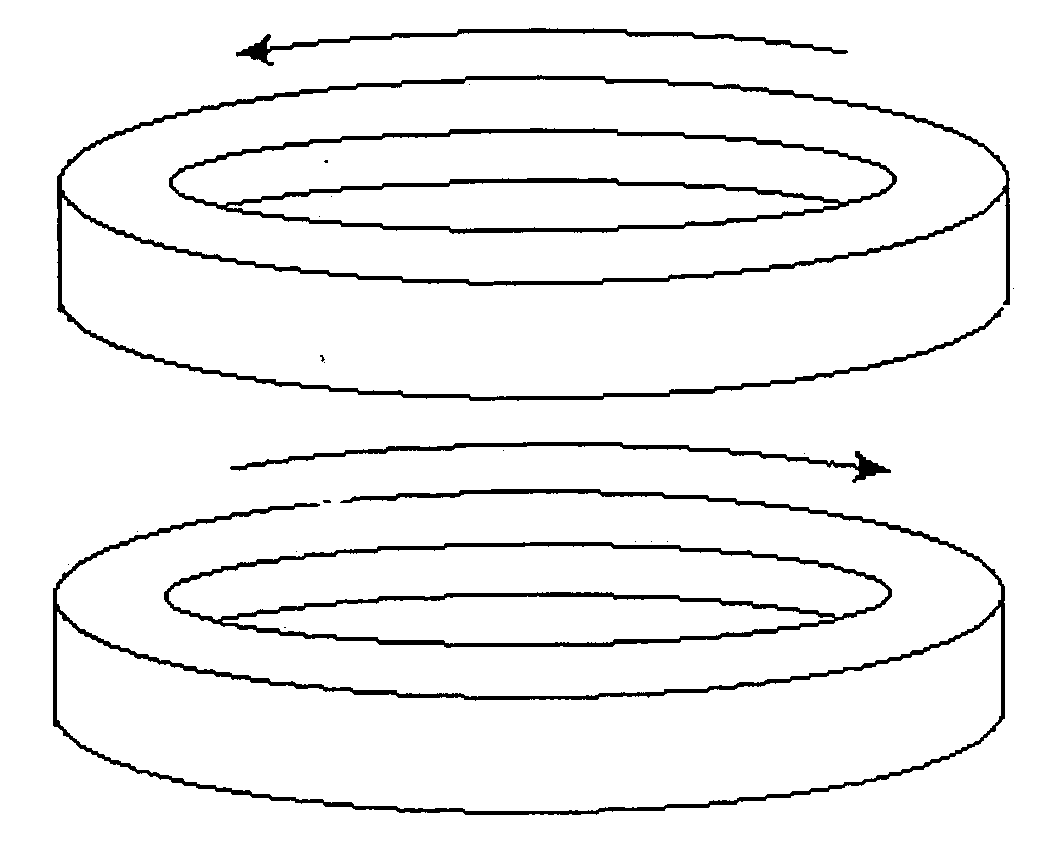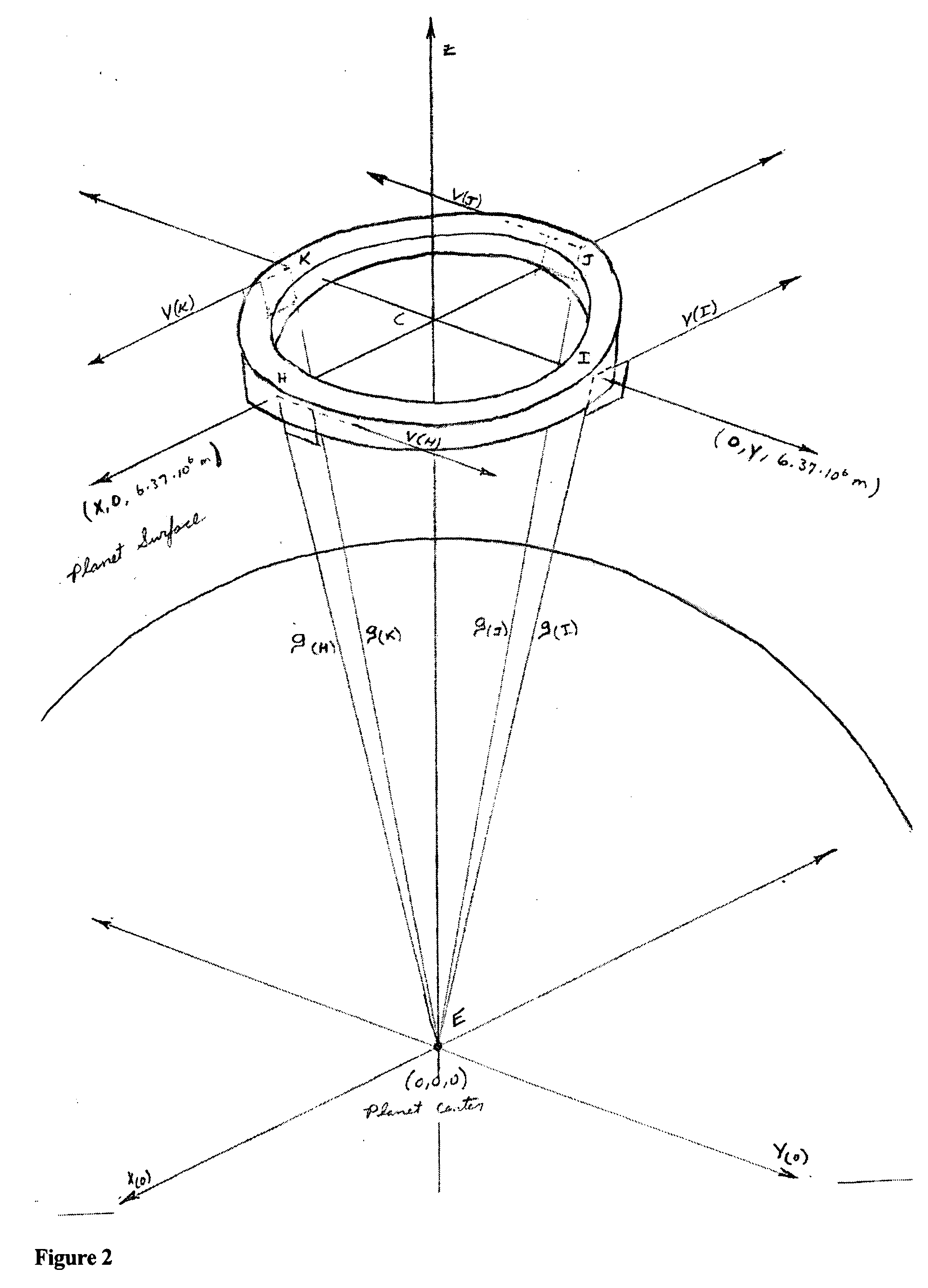Particle accelerator space engine
a technology of space engine and accelerator, which is applied in the direction of machines/engines, cosmonautic vehicles, transportation and packaging, etc., can solve the problem of high rotational velocity
- Summary
- Abstract
- Description
- Claims
- Application Information
AI Technical Summary
Problems solved by technology
Method used
Image
Examples
Embodiment Construction
[0006] Referring now to the drawings; The Particle Accelerator Space Engine is composed of two circular particle accelerator / storage ring / braking devices, mounted one above the other, with particle streams traveling in counter-rotational directions, as depicted in FIG. 1. The configuration is for the purpose of stabilizing cabin motion, to prevent the cabin from rotating. Both clockwise, and counterclockwise particle accelerators may produce horizontal and / or vertical propulsion. but are capable of providing each other with equal but opposite recoil acceleration. The determination of function at a given time as a particle accelerator, storage ring, or braking device is regulated by particle stream velocity at a given time. The ability to kick a particle to a higher, stable, or lower velocity is regulated by timing and intensity of particle accelerator station kicks, and magnetic forces located about the circumference of the doughnuts. Although these technologies are common practice ...
PUM
 Login to View More
Login to View More Abstract
Description
Claims
Application Information
 Login to View More
Login to View More - R&D
- Intellectual Property
- Life Sciences
- Materials
- Tech Scout
- Unparalleled Data Quality
- Higher Quality Content
- 60% Fewer Hallucinations
Browse by: Latest US Patents, China's latest patents, Technical Efficacy Thesaurus, Application Domain, Technology Topic, Popular Technical Reports.
© 2025 PatSnap. All rights reserved.Legal|Privacy policy|Modern Slavery Act Transparency Statement|Sitemap|About US| Contact US: help@patsnap.com



